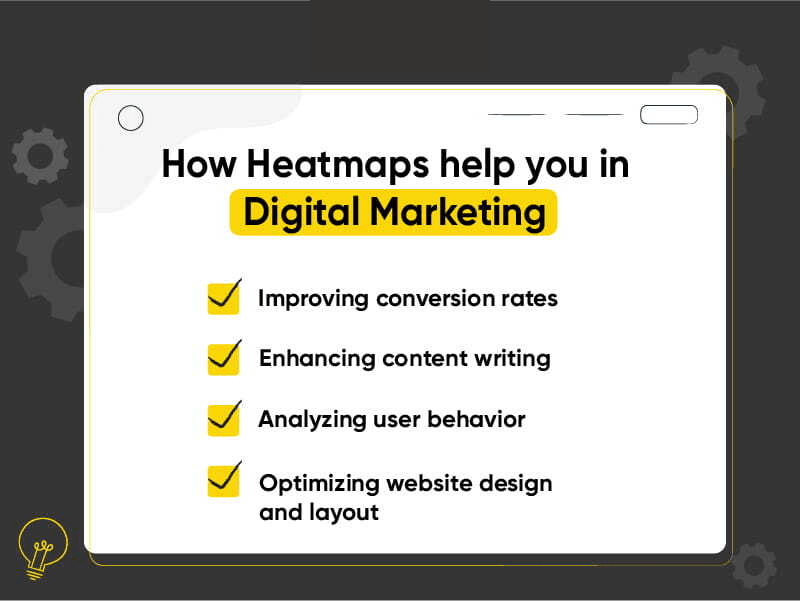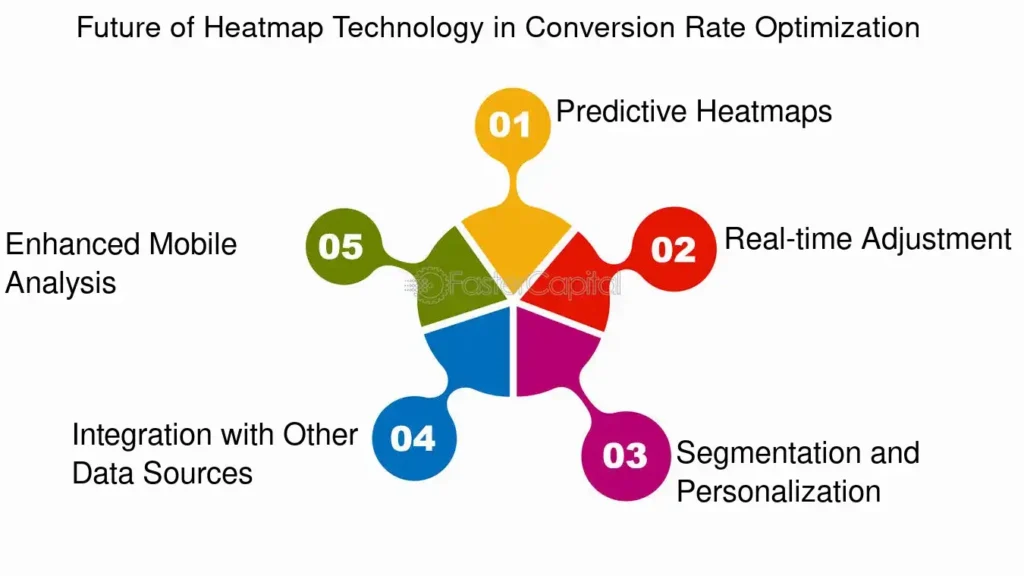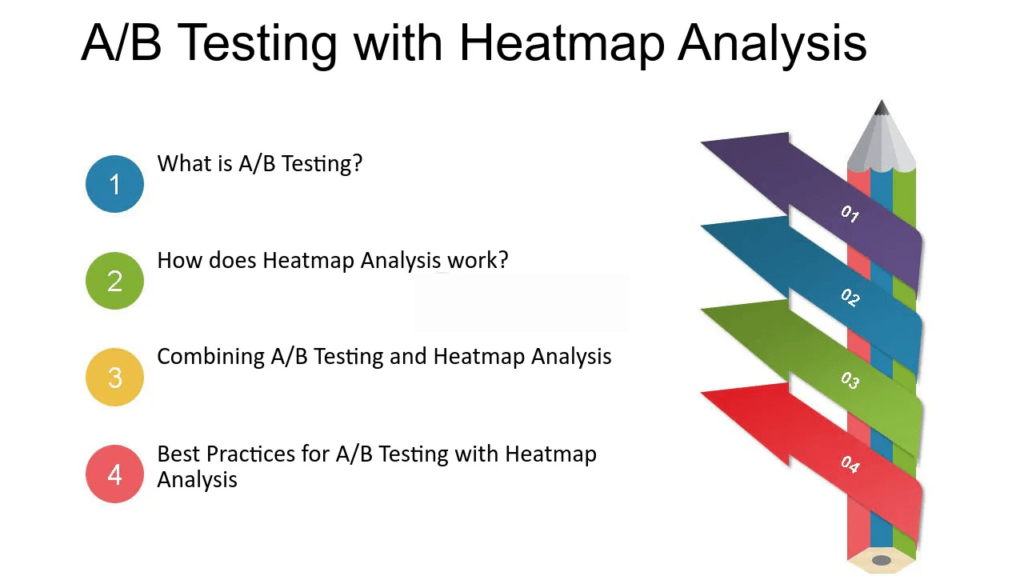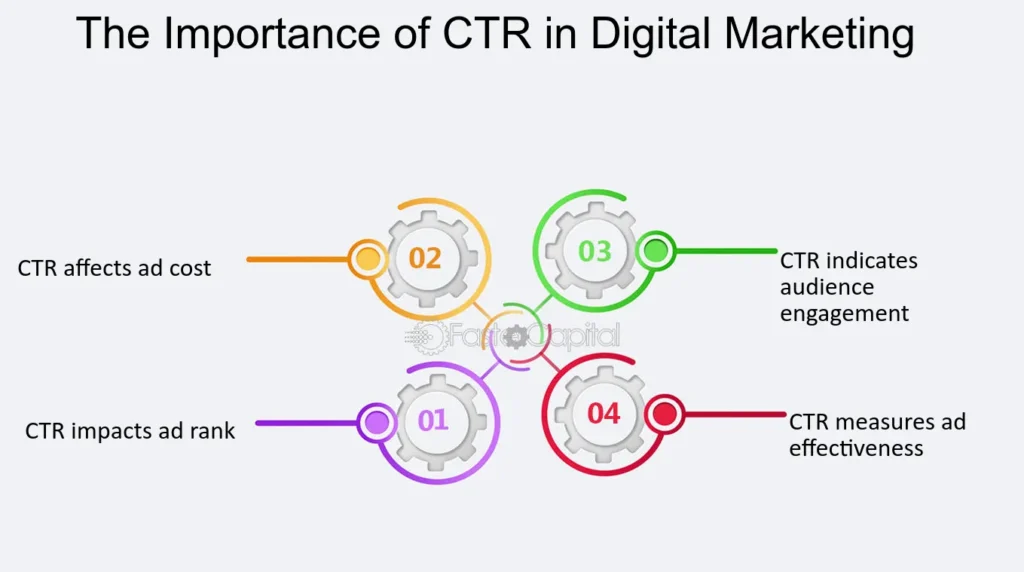Heatmapping, a data visualization technique, is a game-changing tool for digital marketers looking to optimize their strategies and stay ahead of the curve. By visualizing user behavior on your website, heatmaps reveal valuable opportunities to enhance user experience, boost conversions, and refine your marketing approach. Available 24/7, heatmapping provides continuous insights that can transform your digital marketing efforts and lead to greater success.
Here, we’ll dive into the concept of heatmapping, how it contributes to user behavior analysis, and how it plays a critical role in digital marketing insights, website analytics, and conversion optimization.
What is Heatmapping and How Does It Work?
Heatmapping is a visual analytics tool that tracks and displays user interactions on a webpage through color-coded patterns. These patterns show where users have clicked, hovered, or scrolled, allowing digital marketers to understand how visitors engage with their websites. By analyzing these heatmaps, marketers can pinpoint areas of their websites that attract attention, areas that users ignore, and potential opportunities to optimize the user experience.

Heatmaps typically come in three forms:
- Click Heatmaps: Display the locations of user clicks on a page. This is especially useful for understanding which elements attract the most attention, such as buttons, images, or text links.
- Hover Heatmaps: Track where users hover their cursor on a page, indicating interest or intent.
- Scroll Heatmaps: Display the depth of a user’s page scroll. This can help identify if key content or calls-to-action (CTAs) are being missed.
By combining these heatmaps, digital marketers gain a comprehensive understanding of how users interact with their content.
User Behavior Analysis’s Significance in Digital Marketing
User behavior analysis is a critical aspect of digital marketing. Heatmapping helps marketers understand how visitors engage with their websites and content, leading to more informed decisions that can boost conversion rates reaching higher organic traffic. Without this insight, marketers are essentially flying blind, relying on guesswork to determine how to improve their digital marketing strategies.
Heatmapping plays a central role in user behavior analysis by providing data on how users interact with different website elements. By using heatmaps, marketers can identify:
- What users are most interested in: The areas of the page that receive the most clicks, hovers, and attention.
- User intent: Whether users are scrolling through the page, clicking on certain elements, or abandoning the page early.
- Pain points in the user journey: If users are not interacting with key elements or leaving the site prematurely, it’s a sign that changes may be needed.
The insights gathered from heatmaps enable digital marketers to adjust their strategies to enhance user engagement, improve user experience (UX), and optimize the website layout for maximum effectiveness.
Heatmapping and Digital Marketing Insights
Digital marketing insights are essential for creating data-driven strategies that resonate with your target audience and results in increased conversion rates. Heatmapping provides a wealth of valuable information about how visitors are interacting with your website, which can be used to refine your marketing efforts.

For example, by analyzing a heatmap, you might discover that your CTA buttons are not being clicked as often as expected. This could signal that the placement, color, or text of the buttons need adjustment to better attract user attention. Conversely, if certain areas of the page are receiving excessive clicks, it may indicate that users are mistakenly engaging with elements that are not intended to be interactive, leading to frustration or confusion.
Key Insights Heatmaps Can Reveal:
- Effective CTAs: Discover which calls-to-action are converting and which ones need tweaking.
- Content Performance: Understand which content grabs the most attention, and which content is being ignored.
- Behavioral Trends: Track user behavior across different devices and demographics to tailor content and marketing messages effectively.
By leveraging these insights, marketers can continuously optimize their websites and campaigns, resulting in better engagement and higher conversion rates.
Website Analytics and Heatmapping
Website analytics tools like Google Analytics can provide broad insights into website traffic, bounce rates, and conversion metrics. These tools don’t, however, accurately depict how users engage with your material. Heatmapping fills in the gaps by giving a visual breakdown of user behavior.
When combined with traditional website analytics, heatmaps offer a more complete picture of user engagement. For example, while Google Analytics might show that users are spending a lot of time on your homepage, heatmaps reveal where they are clicking or scrolling. If users are spending time on a section but not clicking, it might signal that the content is not compelling enough to drive action.
Conversion Optimization and Heatmaps
Conversion optimization is the process which causes improved effectiveness of your website in converting visitors into leads or customers. Heatmaps are an indispensable tool in this process because they help identify areas of the website that need improvement to increase conversion rates.

Heatmaps provide a direct way to understand how users are interacting with your CTAs, forms, and other conversion-centric elements. For instance:
- If users are not clicking on your CTA buttons, you may need to adjust their design, position, or messaging.
- If visitors are abandoning forms halfway through, it could indicate that the form is too long or complicated, requiring simplification.
- Scroll heatmaps can show whether key conversion elements, like product recommendations or lead capture forms, are being seen or missed by users.
By analyzing heatmaps and making data-driven changes, you can enhance your website’s ability to convert visitors into paying customers.
How Heatmapping Improves User Engagement
User engagement is one of the most important metrics for any digital marketer. High engagement means that users find your website content valuable, which increases the likelihood of conversions. Heatmaps provide actionable insights that help improve user engagement by identifying which elements are most captivating to visitors.
For example, if your heatmap shows that users are spending a lot of time hovering over a particular image or video, you might want to make that content more prominent or interactive to keep users engaged for longer. Similarly, if users are ignoring important sections of your website, you can adjust the layout or content to better engage them.
A/B Testing with Heatmaps

A/B testing is a popular technique for testing different versions of a webpage to see which one performs better for checking performance. Heatmaps can be a valuable companion to A/B testing, as they provide a clear visual representation of how different elements on a page perform with different audience segments.
For example, if you’re testing two versions of a landing page, heatmaps can reveal which layout, CTA, or content placement attracts more user attention. This data can be used to inform decisions on which version of the page to roll out more widely, ultimately leading to better performance and higher conversions.
Analyzing Click-Through Rates (CTR) with Heatmaps
Click-through rates (CTR) are an essential metric in digital marketing, indicating how many users click on a link, CTA, or advertisement relative to the number of impressions. Heatmaps help analyze CTR by visualizing where users are clicking on your page. This allows marketers to determine if the most-clicked areas align with their intended goals.
For example, if your heatmap shows that users are clicking on an image that’s not a link, it may indicate a design flaw or a missed opportunity to add a CTA. By optimizing your design and content based on these insights, you can improve your CTR and overall campaign performance.

Enhancing User Experience (UX) with Heatmaps
The user experience (UX) of a website plays a pivotal role in retaining visitors and converting them into customers. Low engagement, high bounce rates, and eventually lost purchases can result from poor user experience.
Heatmaps are a crucial tool for identifying UX issues that could be hindering your website’s performance.
By analyzing heatmaps, you can identify elements that users are struggling with, such as confusing navigation, inaccessible buttons, or poorly positioned content. This allows you to make informed decisions that enhance the overall user experience, ensuring that visitors can easily find what they need and are motivated to take action.
FAQs
- What is heatmapping in digital marketing?
Heatmapping is a tool that visualizes user interactions on your website through color-coded patterns. - How does heatmapping help user behavior analysis?
Heatmaps provide insights into where users click, hover, and scroll, revealing engagement patterns. - What types of heatmaps are commonly used?
Click heatmaps, hover heatmaps, and scroll heatmaps are the most common types. - How can heatmaps improve user engagement?
Heatmaps identify engaging elements, helping you optimize content to increase user interaction. - What is the role of heatmaps in conversion optimization?
Heatmaps highlight areas where users interact with CTAs and forms, helping optimize conversion paths. - Can heatmaps be used with A/B testing?
Yes, heatmaps complement A/B testing by showing which design elements drive more user attention. - How do heatmaps improve user experience (UX)?
Heatmaps identify UX issues like confusing navigation or inaccessible buttons, allowing improvements. - What are the key benefits of heatmapping for digital marketers?
Heatmaps provide valuable insights into user behavior, improving website optimization and marketing strategies. - How can heatmaps help with click-through rate (CTR) analysis?
Heatmaps show where users are clicking, helping refine CTAs and improve CTR. - Are heatmaps easy to integrate into website analytics?
Yes, heatmaps can be easily integrated with tools like Google Analytics to enhance user behavior tracking.
Conclusion
Heatmapping is a powerful tool in digital marketing, providing valuable insights into user behavior, engagement, and interactions on your website. By incorporating heatmaps into your website analytics and conversion optimization strategies, you can improve the user experience, increase engagement, and drive better results from your digital marketing efforts.
As part of your overall marketing strategy, heatmaps help you gain deeper insights into how users behave, identify pain points, and make data-driven changes that enhance your website’s effectiveness. Whether you’re looking to improve user behavior analysis, refine your digital marketing insights, or boost your click-through rates (CTR), heatmaps can guide your decisions and lead to a more successful online presence.
By continuously analyzing user behavior through heatmaps, you’ll be better equipped to deliver a website that engages, converts, and satisfies your audience’s needs.

Your article helped me a lot, is there any more related content? Thanks!